Dining Redefined: Exploring the Future of Restaurants
From new technologies to personalized restaurant experiences and sustainability – discover the fascinating future of the restaurant industry.
Ghost Kitchens are on the rise, offering an innovative solution to the restaurant industry's COVID-19 crisis.
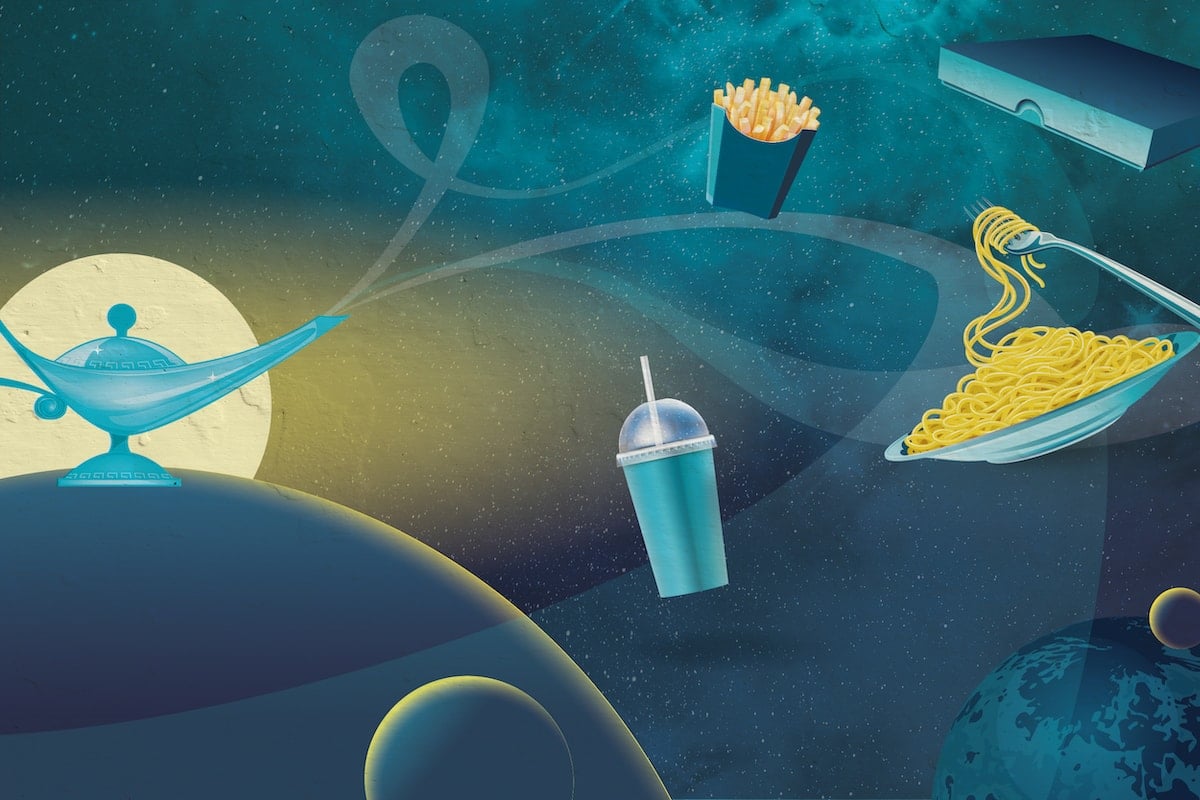
Last year, in one of my Utopia Gastronomica articles, I addressed the Ghost Kitchen concept. In this article, I would like to take up the topic again and dive deeper into it, as the current situation makes it more relevant than ever. My focus this time lies particularly on interesting Ghost Kitchen models from the U.S.
When rumors surfaced that a second lockdown was on the horizon for Europe, many restaurant owners reacted quickly to tap into their new revenue streams. Due to COVID-19, the out-of-home business is experiencing an unprecedented boom. For many businesses, so-called Ghost Kitchens represent a rescue concept. Investor interest is high and current Ghost Kitchen sales have the potential to surpass traditional models. However, the question remains to what extent this development will have a long-term impact.
Building virtual restaurants is designed to help existing restaurants increase sales and customers, by offering new or complementary concepts to their current menu (under a different branding). Restaurants use their existing kitchen staff, but can save on food costs and reduce the amount of food thrown away.
The end user sees the virtual brand as a separate restaurant with its own identity, including a new food direction or a new menu selection. This means, for example, that a BBQ restaurant can now launch Mexican food, the Greek restaurant can offer healthy protein bowls, or the pizza store can deliver gourmet wraps.
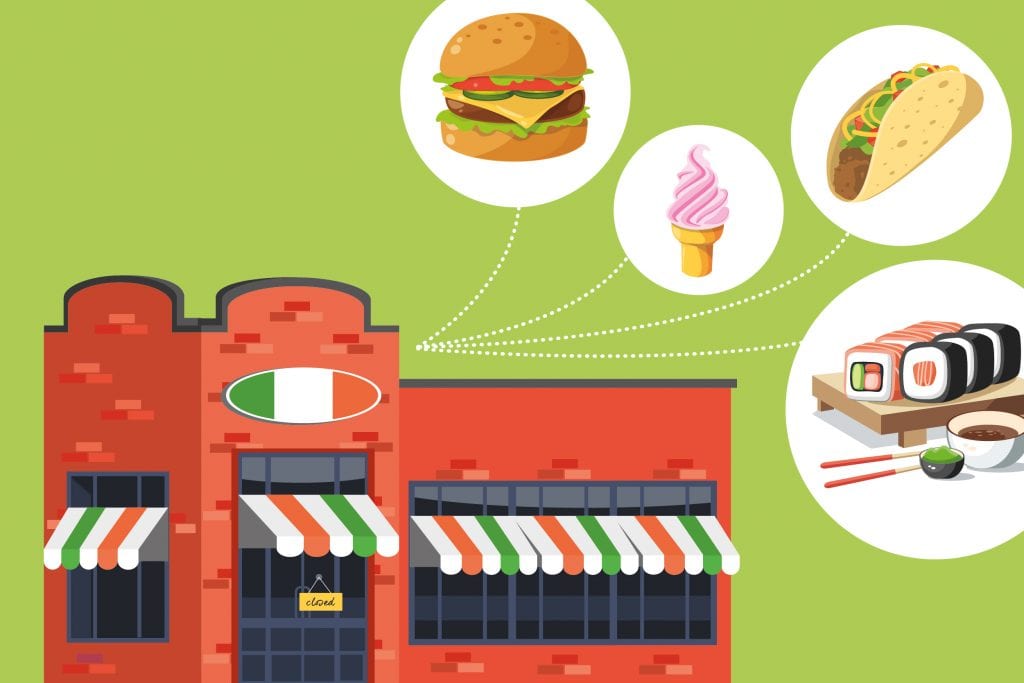
Operating sites can now be used as a Ghost Kitchen, for a new, virtual brand during opening hours. This does not require any change in the supply chain, as the raw materials are stored in the guest establishments anyway. Adding a new line of business with a different target group also allows the owners to rehire unemployed staff. Only the assortment and the prepared dishes change.
Interest in this segment continues to grow, as profits in the casual dining sector continue to weaken under guest room restrictions. Many owners in the hospitality industry have already laid off half of their employees or announced short-time work during COVID-19. Restaurants could only be served at 50 % capacity, according to the COVID-19 restrictions. In some places, restaurants also have to close completely and fixed costs are an increasing stress factor. In addition, a lot of time and money has been invested in hygiene concepts and measures, to be able to serve guests safely. Due to these circumstances, the uncertainty factor is very high and planning for the future is extremely difficult. Therefore, some are switching to new concepts, such as the Ghost Kitchen model.
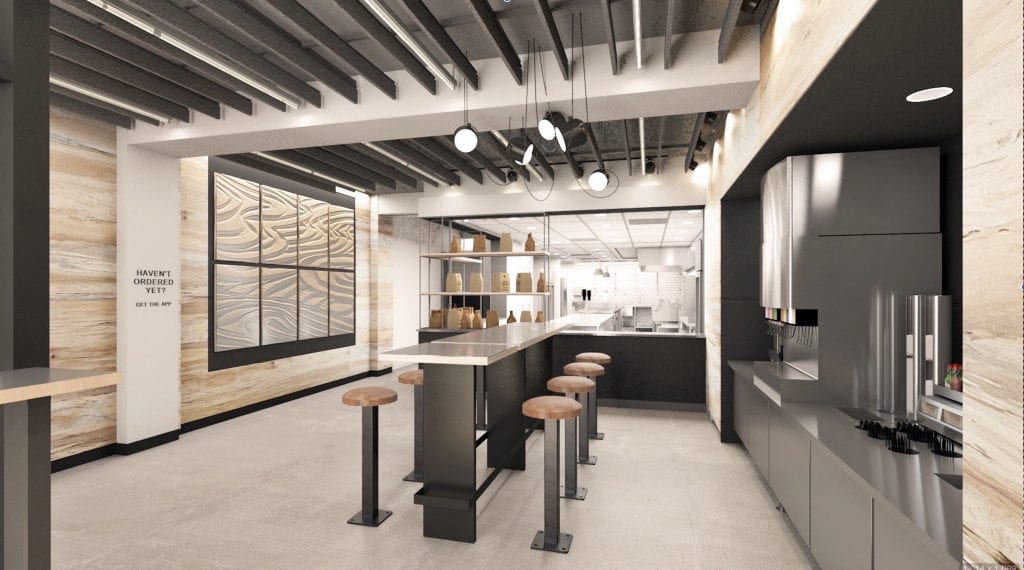 Source: Chipotle – Design of a digital kitchen.
Source: Chipotle – Design of a digital kitchen.
The latest example of this is the U.S. restaurant chain Chipotle, which opened the first entirely digital diner in New York in November 2020. Guests have to order food in advance - either on Chipotle's website or via their app. They can then pick it up, on site. In doing so, the restaurant chain is creating new opportunities to enhance the guest experience.
In the U.S., Ghost Kitchen models are already well underway. For example, there have been four notable rounds of funding for various types of Ghost Kitchen companies in the U.S. so far in 2020.
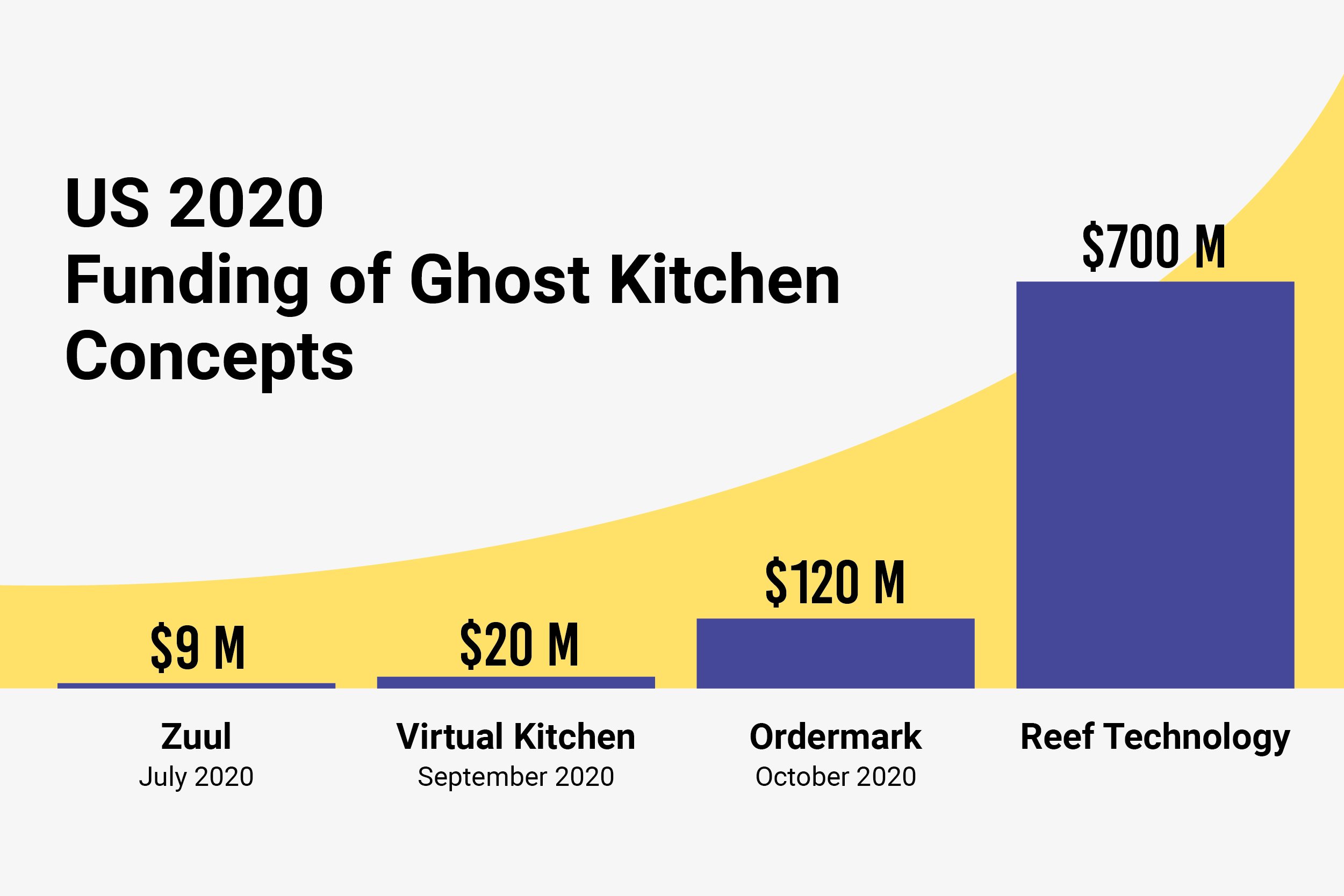 Source: Restaurant Dive
Source: Restaurant Dive
The size of the U.S. Ghost Kitchen market is still far smaller than the Chinese sector, which prides itself on more than 7,500 Ghost Kitchens, compared to about 1,500 in the United States. Globally, the segment could reach $1 billion in value in just 10 years, claims Michael Schaefer, head of Euromonitor Global Food and Beverage, during a Euromonitor webinar earlier in 2020, adding that investment in the sector has accelerated significantly this year due to the COVID-19 crisis.
By comparison, Ghost Kitchen concepts are still considered more of a niche phenomenon in Europe. Nutritionist Hanni Rützler came to this conclusion in her Food Report 2021. According to the report, despite their niche status, Ghost Kitchens have the potential to change traditional gastronomy – and not just during COVID-19. The trend will also continue thereafter.
Investments related to COVID-19 have established two particular types of business models for Ghost Kitchen concepts, bringing the potential future of this market into focus.
Some restaurants are teaming up to operate from the same kitchen. This allows them to compensate for high fixed and overhead costs, better position offerings, and accommodate increased guest interest in delivery and pickup, in the wake of COVID-19. Circumstances are currently as difficult as they have ever been, walk-in customers are staying away and restaurant visits have plummeted or stopped altogether, due to the lockdown. It is effectively impossible to keep business open if costs remain the same. So from a cost structure standpoint, Ghost Kitchens can be a very attractive solution.
Large restaurant companies have been using this strategy since before the pandemic, to generate additional profitability from their existing footprint and allow franchisees to access a new revenue stream. Existing locations are additionally branded, allowing operators to run a virtual sister brand from the store's existing kitchen.
A few Ghost Kitchens can already be found in Germany, Austria and Switzerland. The Austrian Innovation-Portal Trending Topics has taken a close look at the Viennese landscape of Ghost Kitchen restaurants. A total of six virtual brands were found, operated by the online delivery service Mjam. Behind the whole concept, in turn, is Honest Food, a Berlin-based startup. The existing restaurants act as franchisees of the new, virtual brands. For example, the local Pizzeria Delfino operates the virtual brand "Gangnam Kitchen." Ghost Kitchen concepts are not only popular in Vienna, but this trend also seems to have arrived in Salzburg. If a customer has a craving for burritos, burgers or Korean chicken, these dishes can all be ordered from the same restaurant. In Daljit Bhachoo's kitchen, all these dishes are prepared and delivered under different brand names: Burritos at "Mamacita," Korean food at "Gangnam Kitchen," or burgers at "Cheesus Burger."
There are also several Ghost Kitchen concepts already operating in neighboring German-speaking countries. The family-run Swiss restaurant company, Familie Wiesner Gastronomie has recognized the potential of ghost kitchens and offers several virtual brands to complement existing restaurants. In Germany, for example, the company Vertical Food is a well-known representative of the German Ghost Kitchen scene. This operator runs various food brands and prepares dishes for every time of day. From breakfast porridge, to salads as a lunch option, to pizza in the evening. And it does it all in one kitchen.
From a cost structure perspective, Ghost Kitchens can be very attractive. In many cases, there are additional cost savings to be had by sharing space and locations. I believe the food service industry will take a hard look at costs. There are many kitchens whose utilization can be increased, and COVID-19 has affected this in a very acute way. We've seen supply open up due to forced closures or market-driven closures during COVID-19. For example, there are restaurants that are busy from 6 p.m. to 2 a.m. It’s possible to sublet the space during the vacant hours to split the cost of the unused time.
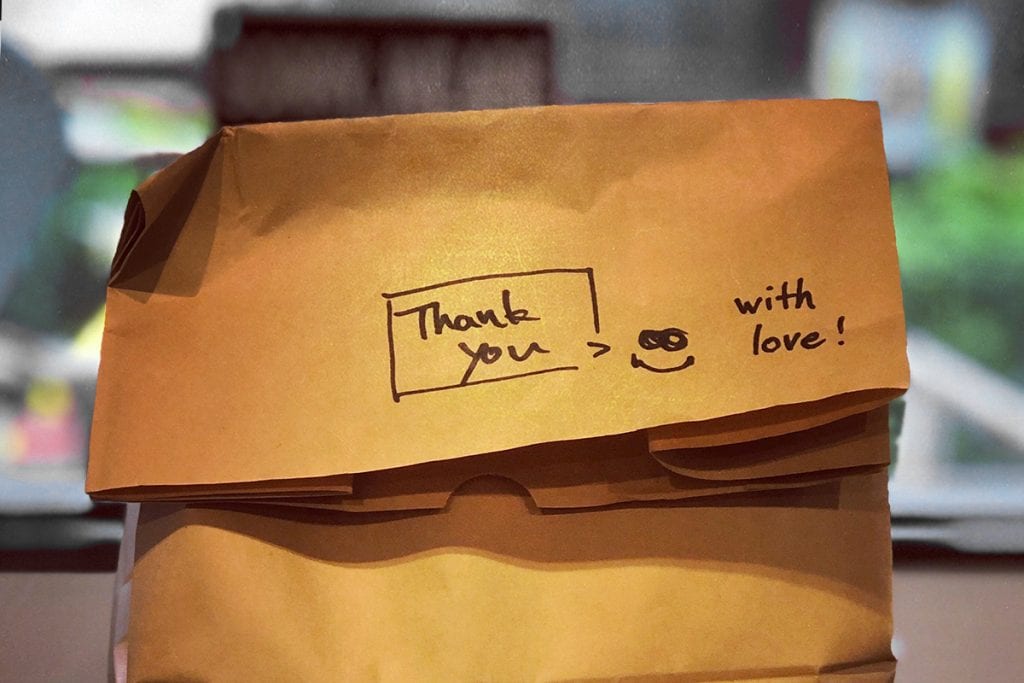
In the U.S., one company has already recognized the potential behind this and developed a business idea out of it. The company Use Kitch, founded in January 2020, allows vacant commercial kitchens in companies, such as hotel restaurants, to list their spaces for rent on its website. Kitchens can also indicate their available equipment, what permits and licenses they hold, and what requirements they have for a restaurant partner, such as rental rate and minimum lease commitment.
In Europe, however, the situation is somewhat different. Here, such ideas are circulating, but they still work too infrequently, with a view to communal catering. This is possibly due to the framework conditions that the local industry brings with it. This is also the opinion of Christian Steuber, founder and owner of cuisineupgrade and a long-time expert in the industry. He notes that not many company canteens are open to the public, some are located on factory premises, and this in turn makes access difficult for pickup by delivery services. In many cases, the operator of the commercial kitchen is not the owner, and permission to use the infrastructure may also have to be obtained first. Therefore, the question arises how to deal with costs for new investments or general costs for electricity, wastewater and re-food. Other challenges include the logistics of the goods on site and on delivery, as well as in preparation and cooking, including hygiene issues, as this is a "mixed concept approach."
Should the Ghost Kitchen concept be operated by in-house or external staff? What about the working hours defined by the chefs in their agreement with the caterer? All these and other points play an important role in the implementation of a virtual brand.
This article has now already presented a few examples of Ghost Kitchens in Germany, Austria and Switzerland. But what does the Ghost Kitchen scene look like in the pioneering U.S.? I have already mentioned two examples: Chipotle's digital restaurant and Use Kitch. Other notable Ghost Kitchen companies include Reef and Kitchen Podular, which are using non-traditional properties such as parking lots and garages, to create modular Ghost Kitchens and expand these hubs for restaurants in the U.S.
Reef sees itself as an alternative to large host kitchen models like Kitchen United and Cloud Kitchens, which have a fixed number of kitchens available in their facilities and operate much like a landlord for partner restaurants. Reef, on the other hand, controls 5,000 parking lots and garages in the U.S. as well as in Canada. In addition, Reef will offer outdoor seating and add locations where guests can pick up their food from the kitchen centers. Kitchen Podular already operates this way, offering modular units. In doing so, these units can be expanded with pick-up windows and even drive-thrus if a restaurant wants to expand its off-premise offerings.
Basically, it's just a matter of renting space from a Ghost Kitchen rental company. What's uncertain is whether this model will work for every brand. After all, you have to get enough business to make it profitable. The U.S. has a different approach than Europe, due to their mentality. In the U.S., people just try things out, and if they fail, at least they know and can try something new. In Europe, people think about it for a long time, do the math, and then maybe try it out at some point.
As we are currently seeing in the COVID-19 crisis, the future is simply uncertain, nothing can really be calculated. Everything can change from one day to the next. But we have to be flexible enough to manage successfully in the future.
The COVID-19 virus has acted as a catalyst for the good, the bad and the ugly in the restaurant world. It can be observed that everyone who had never even thought of putting their menus online on delivery platforms is now jumping at it.
Even as Ghost Kitchen models expand, these companies still present obstacles for restaurants looking to maximize their revenue streams. In the U.S., for example, most major Ghost Kitchen providers partner with large third-party vendors such as DoorDash, Uber Eats, Postmates and Grubhub, which take a significant portion of each sale from participating restaurants. It's difficult to gain a quick foothold in this segment without going through one of these "big four." These control 95 % of the meal delivery app market, according to data from U.S. tech company Second Measure.
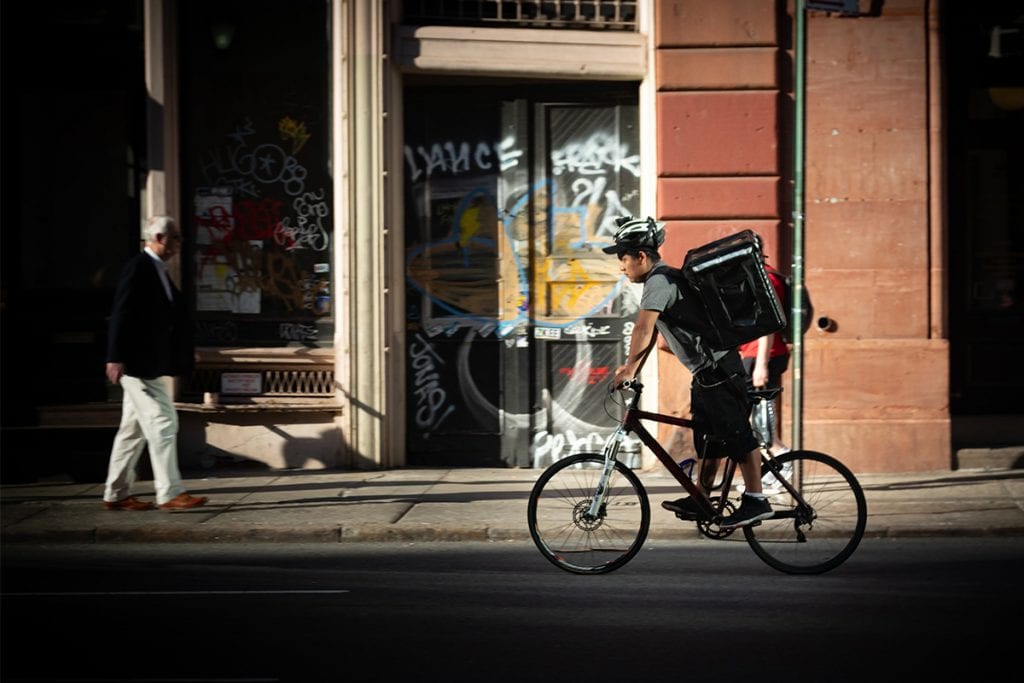
Because of these delivery partnerships, a restaurant may be able to save on overhead costs by partnering with a Ghost Kitchen provider, but it still needs to generate enough orders to make up for the Ghost Kitchens delivery commissions and fees in order to turn a profit. This is easier said than done, as meal delivery apps are already crowded with well-known brands. The momentum has also led restaurants to partner with smaller, more niche-oriented delivery providers – such as Slice – or partner with multiple restaurants to afford building their own delivery service and app. By doing so, restaurants hope to gain more independence.
Traditional real estate-focused Ghost Kitchen solutions have also been criticized for making the space difficult to regulate. Some opponents of the model argue that low-cost Ghost Kitchens undermine the economic stability of traditional, local restaurants that can't compete with the scalability of digital brands. This was a problem even before the market proliferated.
"While the out-of-home business is booming, especially at this time, no brand can just start delivering and taking out and expect it to be a huge and instant success," says Joy Lai, chief operating officer of U.S. Ghost Kitchen company Kitchen United, in an interview with Restaurant Dive.
Restaurants need a strategy and good planing that will enable them to attract and retain customers.
Joy Lai
As you've seen, the Ghost Kitchen concept has both advantages and disadvantages. Ghost Kitchen models are particularly convincing in that, as for operators, costs can be saved in all possible areas – from staff, to furnishings, to rent. Because of the online-only nature of delivery services, Ghost Kitchen operators can adapt to market-driven or customer-driven changes. For example, menus can be updated online quickly and at no cost. Although this online-only offering can be advantageous, it also comes with some disadvantages. By selling through delivery platforms, transaction or service fees are incurred with each order. With Ghost Kitchen restaurants, interaction with customers also suffers, as no direct relationship can be established with customers, as is possible in traditional restaurants.
The rapid rise of Ghost Kitchen models and delivery services is certainly shaking up the restaurant industry, and traditional concepts will be impacted in the future as a result. A rethinking of our industry is already taking place. In crises, unexpected ideas and novel concepts are developed that will change the industry in the long run, even if one or the other cannot imagine it now. I am excited for the future and hope for even more innovation and creative ideas.
From new technologies to personalized restaurant experiences and sustainability – discover the fascinating future of the restaurant industry.
Discover the challenges confronting the hospitality industry in 2024 and discover successful approaches to surmount them.
In the series Utopia Gastronomica, Thomas Primus writes about the future of the hospitality industry. This time, the topic is the Ghost Kitchen trend.
Make sure you never miss out on updates and trends about digitalization in the hospitality industry by subscribing to our monthly newsletter. You will receive useful information delivered directly to your inbox.